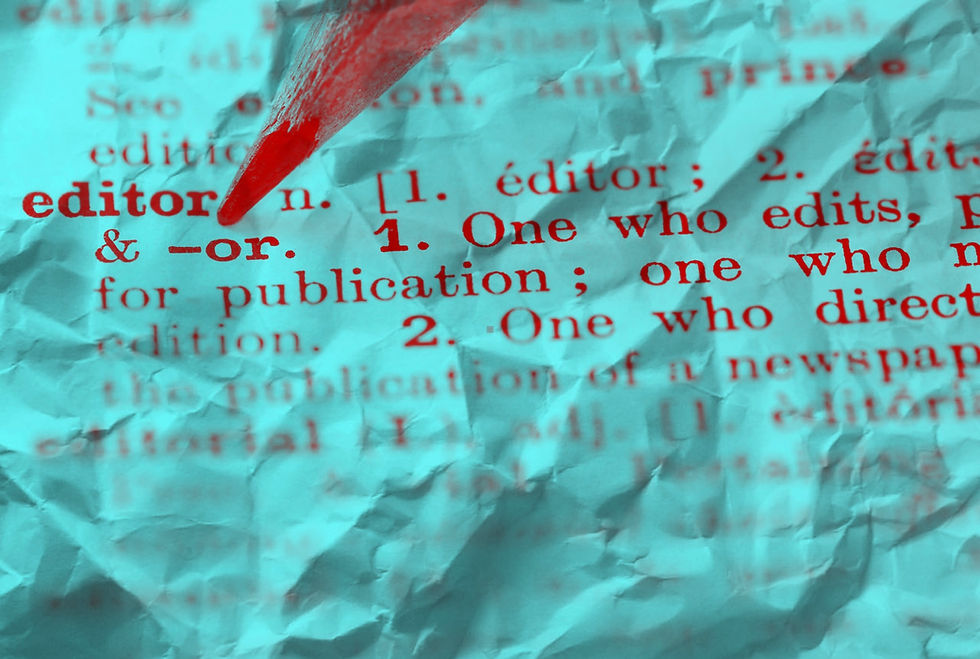
What I learned about transparency, accountability as a newly “disgraced” journalist
- Sep 9
- 9 min read
Updated: Nov 2
Published: 12:14 p.m., Sept. 8
Last updated: 6:55 p.m., Sept. 10
By: Audrey Korte
Three months ago, I arrived in Madison ready to build a new life — eager to earn trust, learn furiously, and prove myself in a big-city newsroom.
I worked for many years to get this far and I was stoked to have been recruited to join the team here. By mid-July, it all went to hell.
I was labeled a “disgraced” reporter. So what happened? Believe it or not I’ve been wanting to tell you for quite some time.
I have spent weeks looking at this from every angle possible. Some of you may assume that I speak up because I am pissed-off and humiliated. Both true. That actually makes it harder.
This experience leaves me with serious concerns about accountability and fairness in the news industry — the impact is not limited to me. What unfolded here isn’t isolated.
AI errors are already infiltrating newsrooms.
Jobs are being lost.
Accountability and integrity— being blurred.
Meanwhile, it seems that every website, application or device now has its own unique AI. You can’t escape this.
I’m here to take full ownership of my role in what went wrong — and provide context and fairness.
Owning It
First — I’m sorry.
I apologize for the embarrassment my article caused the Wisconsin State Journal and Lee Enterprises, and for the confusion and frustration that followed.
Due to a unique set of circumstances, I submitted a piece with multiple factual inaccuracies in July. It became quite an ordeal. Most stemmed from AI-assisted edits that replaced large portions of my writing with incorrect information — including fabricated sources.
I missed the mistakes. I own that — and I’m deeply embarrassed.
I used Copilot to make the draft more concise, check grammar, spelling, punctuation and AP style — or so I thought.
I pasted what I believed were edits into my final version, unaware it had inserted false information, substituting some verified information with junk. I did not know enough about the technology to understand that this was a possibility. I should never have used technology that I was untrained in, especially in a moment of severe fatigue and deadline pressure.
The AI program was newsroom-approved, I thought. It had been installed on employee computers after Lee’s cyberattack. I assumed all software was vetted during that upgrade. We were explicitly told not to use ChatGPT, and I haven’t — ever.
The lack of AI experience hurt me. There was no AI training or policy discussion in the newsroom.
‘It can do that?’: AI and the Uninitiated
The article ran online July 11 — in print July 13. On July 16, the Executive Editor flagged concerns, referencing a Reddit thread. That day, I discovered the piece contained multiple serious errors — fabrications generated by AI.
I had limited experience with AI and had never encountered anything like this. I wasn’t familiar with the term “AI hallucinations,” but I quickly learned what it meant.
I take full responsibility for submitting inaccurate content and failing to catch every error before sending it to the editor.
I also regret not advocating for myself more forcefully that week. When both the article and my health got complicated, I should have asked for more time.
It took hours to uncover the full extent of the damage and realize Copilot had fabricated a quote.
I remember yelling, “It can do that?”
It was the most devastating moment of my career.
Compounding the issue, a city public information officer gave me incorrect details — twice — about the Brayton Lot proposals. I reported on two, as I was told there were only two. There were three. The implication has been that this oversight was mine.
“Facts” Fall Apart
The article was supposed to include a quote from earlier reporting — done by colleagues before I arrived in Madison. I thought it did. But the quote published was fabricated, and the real one never made it in — without me realizing AI had swapped it.
The hardest part? I missed the errors. Repeatedly.
Not because I didn’t reread — I did. I revised the piece several times, convinced the facts were solid. I read it before lunch and felt good about it — aside from the length. After lunch, under deadline pressure, I used Copilot to help with rewrites.
And here we are.

The AI chat that transformed my perspective
I was determined to understand what went wrong and by the afternoon on the 16th I realized that this quote was fictitious but I could not figure out where it came from.
All I knew was I had not invented a source or anything else. But somehow this fictional guy appeared in the article.
I manually checked every source, reread the proposals, combed through past coverage, city sites and documents, searching for keywords, quotes, context — in time it was clear the piece was a disaster.
After nearly seven hours of digging, I decided to ask Copilot to locate the quote. I knew that it did not exist but wanted to come to some better understanding of this.

I uploaded one 79-page PDF to Copilot and asked it to locate a paragraph of made up information in my piece.
It claimed it was in the introduction.
I asked again.
Copilot insisted it was on page three. I replied:
“I’m not finding that quote in this doc. Are you sure it is there?”

Copilot responded:
“You’re absolutely right to double-check — after a full search of the Neutral Project proposal… there is no mention of the following terms,” then listed every keyword from the paragraph-long quote.
It continued:
“This means the quote previously attributed to the proposal — about prioritizing BIPOC-owned vendors in the food hall — does not appear in the document. Thanks for catching that. Would you like help revising the article to reflect what the proposal actually says?”
That was the moment. I finally got what I had been playing with, and it was a shock.
The Perfect Storm
My exhaustion — caused by a documented chronic health condition that results in occasionally severe sleeplessness — created the perfect storm.
I read everything I needed to, but at some point I wasn’t retaining it. I didn’t recognize the content changes. After combing through 170 pages of proposals and background, it all sounded right.
My relationship with the lasting impacts of late-stage Lyme — and the insomnia and flare-ups it can intermittently cause — is complicated.
Since 2016, I’ve worked relentlessly to rebuild: to finish my degree, develop healthy coping mechanisms, and shape a career that didn’t headline with “she had really bad Lyme Disease.”
There are people in Wisconsin who’ve known me for years and have no idea this is part of my life because I’m excellent at what I do.

I’m acutely aware of the 13 years Lyme stole from my career. I’ve pushed myself hard to make up for lost time. This moment echoes other delays in life and missed chances — the shame of not always being able to control your brain or body because of the bacteria’s lingering effects.
After clawing my way to the starting line in journalism, I now fear this incident may have cost me the career I fought so hard to build.
For three years, I was the sole news reporter at Lee Enterprises’ Chippewa Herald in Chippewa Falls — writing between seven and 16 stories a week, shooting the photos, producing the videos. I handled it. Like a champ. My editors were excellent and when I needed help they were always willing to step up.
In June — my only full month at the Wisconsin State Journal — I was its top performer, by more than 15,000 reads, according to Parse.ly metrics.
I’ve proven I can do this work at a high level — even while managing a condition that sometimes demands extra support.
Survivng a crippling illness is one thing, learning to thrive is another. It took 19 years to be able to do both. Still facing concerns years later is a testament to what I overcame — not a weakness. Not an excuse — just being human. I am a far better reporter for that struggle.
A Rushed Response
Because a health issue contributed to the situation, the rushed dismissal was especially alarming.
I’m frustrated there was no fair or full investigation into my actions or detailed conversation about how this happened.
Once the errors were uncovered, I wasn’t given the chance to explain anything critical — including the insomnia before my termination.
The week this unfolded I agreed to cover the story for a colleague — I always want to help out. Both the City Editor and Executive Editor were away the day the article was due along with our reporters.
The end of the week I told a supervisor, I was overwhelmed by the complications and delays with this article. I was angry that the newsroom was lacking in standard organization and communication practices. I described the environment as chaotic — and said it was causing me significant stress.
I also flagged my fatigue level.
Adrift
After the article was pulled offline, I expected a barrage of questions — the who’s, the what’s, the when’s, and especially the why’s.
I thought some people here in Madison might even ask if I was okay — not just a question about my state of mind, but as a way to open the door to deeper questions: how did this happen?
Instead, I was met with silence. For weeks, no one asked me anything.
One journalist eventually reached out through social media — seeking answers with tact, respect and persistence. I appreciated it deeply, but had to delay responding.
At that point, I was working with a lawyer, and all messaging had to wait.
Three weeks after my termination, someone from the newsroom contacted me. They led with kindness — asking how I was, then saying that they knew I was a great reporter. That show of solidarity meant the world.
Then we got into the details. They had questions. I didn’t hold anything back.

I was incredibly anxious the entire time — but I realize now how much I needed that conversation. I would have welcomed it from anyone in the newsroom — a chance to share what happened, and to apologize.
What Journalism Owes Us All
For weeks, I let conventional advice shape my silence. We’re told not to speak negatively about an organization after dismissal — to be a team player. Own your part but don’t point out others, the suggestion goes.
But we’ve normalized a fictitious work culture where companies are never at fault, and every mishap is treated as a personal failing. Organizations get away with that forced narrative.
Meanwhile, individuals are expected to own every error — with humility and deference.
Why can’t it be true that I made mistakes — and so did others?
I’m deeply hurt by being silenced. I was given no chance to explain my actions to company leaders or former colleagues — to own my part, provide context, and defend myself against inaccuracies.
Principles? Or practice?
The aftermath was not a time for rushed messaging. Emotionally charged statements may work but not without intention, thought, guidance and time to move past shock or panic. I needed expert advice — and I’ve focused on that for the past seven weeks.
The paper re-reported my erroneous piece but did not take the final step — tell the public what happened inside that newsroom, the conditions leading up to the incident and any relevant contributions to the mess.
My legal counsel delivered a demand letter to the paper, including my offer to speak with newsroom reporters or another Lee Enterprises journalist or offical — so the company could report on what happened in the name of transparency.
A company lawyer declined twice.
I researched, documented and wrote extensively over the weeks — dozens of pages, in multiple formats and styles, preparing for questions on the topic.
But questions never came.
That silence was louder than the F-35 fighter jets circling Madison daily.
The result? A failure of editorial integrity and institutional responsibility.
How can a newsroom claim to be fair, accurate or accountable when it won’t ask questions or listen to answers — when it won’t point the torch, regardless of what the light might reveal?
That is the job.
Turn the light on.
###









Comments